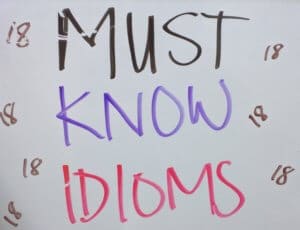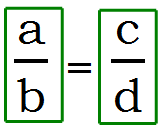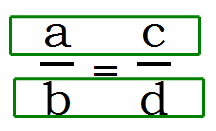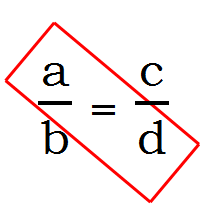Events & Promotions
|
|

GMAT Club Daily Prep
Thank you for using the timer - this advanced tool can estimate your performance and suggest more practice questions. We have subscribed you to Daily Prep Questions via email.
Customized
for You
Track
Your Progress
Practice
Pays
Not interested in getting valuable practice questions and articles delivered to your email? No problem, unsubscribe here.
- Nov 20
07:30 AM PST
-08:30 AM PST
Learn what truly sets the UC Riverside MBA apart and how it helps in your professional growth - Nov 22
11:00 AM IST
-01:00 PM IST
Do RC/MSR passages scare you? e-GMAT is conducting a masterclass to help you learn – Learn effective reading strategies Tackle difficult RC & MSR with confidence Excel in timed test environment - Nov 23
11:00 AM IST
-01:00 PM IST
Attend this free GMAT Algebra Webinar and learn how to master the most challenging Inequalities and Absolute Value problems with ease. - Nov 25
10:00 AM EST
-11:00 AM EST
Prefer video-based learning? The Target Test Prep OnDemand course is a one-of-a-kind video masterclass featuring 400 hours of lecture-style teaching by Scott Woodbury-Stewart, founder of Target Test Prep and one of the most accomplished GMAT instructors.
Kudos
Bookmarks
| FROM Magoosh Blog: 3 Common MBA Application Mistakes |
In the past 9 years, we’ve worked on a lot of applications. Over 26,000 to be exact. And through that experience we’ve…
2. seen some big trends across applications. Here are the 3 biggest offenders: #1: Not answering the prompt You’d be surprised by how prevalent this issue is. After all, responding to a very clear prompt seems like the easiest and clearest part of the MBA application process. But after polling our team of 40+ MBA experts, this was the number one response. And this issue comes in many forms:
The adcom isn’t looking for a certain “type” of applicant, so don’t waste your time trying to be someone that you’re not. And if they want to know about your greatest accomplishment, they’re going to ask for it! So save yourself some time and give them what they are asking for. Literally. Answer the question they are asking. #2: Underselling yourself in your resume Let me save you from yourself right now and tell you that a job-hunting resume is not an MBA application resume. When you submit a resume in your apps, it should not merely be a list of all the things you’ve done. It should be a list of the things you’ve done and how you accomplished them and the impact of those accomplishments. And don’t forget to put it all in context. Don’t make the mistake of assuming the person reading your application comes from your industry or even understands it. You need to present everything so anyone (even your grandma!) will know whether it is a big deal or not. Your resume is your chance to highlight your leadership experience and your achievements, especially now that most MBA essays focus on the more personal side of things. You have very limited space to prove your impact, so you need to be clear, concise, and contextual. #3: Not researching the individual programs. If you’re about to drop $150K and 1-2 years of your life on something, it’s probably a good idea to do your due diligence. But even if you could see yourself being happy at any school with a strong brand, you still need to do your research. Why? To get in. (Don’t believe me? Then listen to someone who is currently studying at MIT!) When you’re applying to b-school, you need to prove to the adcom that you need this MBA in order to reach your career goals. And if you want to make that case, you need to also explain why that school – specifically – is going to get you there. Saying you like Columbia because it is in NYC is not enough. Neither is saying you like Kellogg because of their strong marketing program. You must go deeper. Get specific. Write a love letter to the school, laying out all the many ways it is going to get you exactly what you need to graduate, get a job, be super successful, and donate lots of money back to the school. But you can’t do that without knowing the program inside and out. Applying without doing research in is a waste of time. Yours and the adcom’s who will be reading that application. So take your time and do your research: talk to current students, talk to alum, visit the school… get as much information as you can. The post 3 Common MBA Application Mistakes appeared first on Magoosh GMAT Blog. |
This Blog post was imported into the forum automatically. We hope you found it helpful. Please use the Kudos button if you did, or please PM/DM me if you found it disruptive and I will take care of it.
-BB
Kudos
Bookmarks
| FROM Magoosh Blog: Princeton Review GMAT Book Review: Cracking the GMAT 2017 |
The newest Princeton Review GMAT book comes in two versions: Cracking the GMAT, 2017 Edition and Cracking the GMAT Premium, 2017 Edition. Both Princeton GMAT books are sparse on fundamentals and heavy on process of elimination, i.e. nifty test gimmicks. The premium version comes with six computer-adaptive practice tests, and costs about $7 more than the non-premium version on The Princeton Review’s website. (Though, of course, there are less expensive options on Amazon.) Book images by The Princeton Review The Princeton Review GMAT Book When one reads these books, one may think that they are actually “cracking” the test: the questions are very straightforward, and The Princeton Review almost seems to be nudging you smugly saying, “See how easy this is.” But the GMAT is not easy, and cannot be reduced to simple estimation and process of elimination. While both are useful techniques, to an extent, The Princeton Review attempts to predicate its entire pedagogy on what it fondly dubs POE: Process of Elimination. Buyer Beware: The GMAT is far more difficult and requires learning the actual fundamentals and concepts behind the test. I’m going to delve into the specifics of how the Princeton Review GMAT book handles Verbal and Math concepts and strategies. But first, let me preface both the Verbal and Math write-ups with a note: this organizational set up (sub-categories within Verbal and Math) is particularly suited to books that take the time to delve into each section independently. The Princeton Review skims the surface in each section, sometimes wasting an entire page with a single problem, or some distracting blurb in the margins telling us how the B-school student likes to wake up at 6:45 and watch CNN. What is clearly missing from every section of the Princeton GMAT books is the ease-of-use and organization found in the Kaplan books. (That is not to say Kaplan is great; it too has numerous issues). Nonetheless, I’ve maintained the structure to highlight the different sections of the test and how The Princeton Review handles them. Verbal Critical Reasoning The only section on the Verbal that The Princeton Review does to semi-decently is the Critical Reasoning section. The different question types are introduced. One learns how to take apart an argument. And one learns how to spot wrong answer choices. One doesn’t, however, get much practice. We learn the eight question types, but we do not even get eight practice questions. It’s funny how much the book promises on the cover, but how little it actually delivers. Sentence Correction Doing well on Sentence Correction requires learning both the fundamentals and advanced aspects of English grammar. To achieve this aim, the Manhattan GMAT has a 300-page book. The Princeton Review GMAT book tries to dispense Sentence Correction wisdom in a mere twenty pages (many of which do a poor job maximizing space). To be fair, I could see this section being helpful to an absolute beginner. But even that person would need to learn far more grammar than that provided here, and would, at the very least, want more practice after learning about a specific grammar concept. (If there is a section on Parallelism it would be nice to have some practice questions). Ultimately, this points to the fact that this book is teaser. For the actual Princeton Review class? Maybe. My guess is they are hoping people purchase their other GMAT guides, those loaded with more questions. Reading Comprehension Again, The Princeton Review makes everything seem much easier than the test. Passages seem as though they were lifted from the encyclopedia. True, that level of reading can be warranted when a book is trying to impart a specific approach. Even then Princeton GMAT techniques are too general: at times I feel as though I am reading an SAT guide. With The Princeton Review, unlike Kaplan, I do not feel l have learned much I can directly apply. Sure, I get the main idea of the passage and know to avoid extreme language in the answer choices…but really there is so much more to the GMAT than that. Terms such as ‘yin-yang’ tend to be more distracting than helpful. That is not to say nothing is helpful here. But for an introduction to the GMAT, Kaplan does a far better job. Math For an absolute beginner, meaning somebody whose mind goes numb as soon as somebody so much as says the word ‘fraction’, Princeton GMAT offers an un-intimidating, straightforward approach to basic math. You get math drills, i.e. practice questions to help you learn the basics. Techniques such as “Picking Numbers” are introduced. Unless you are looking to score about 500, the math help in this book will not help you attain a competitive score. Nevertheless, many of us are rusty in math, and in that sense, The Princeton Review provides a better primer than Kaplan (which already presupposes a decent level of math knowledge). Problem Solving The usual suspects: you’ll learn everything from mean, median, and mode to combinations. Again, everything is at a basic level to help reacquaint you in case you haven’t seen many of these concepts in awhile. Data Sufficiency Sure there is an entire section on Data Sufficiency, and even a section on advanced Data Sufficiency. The latter is not advanced, but targeted more at the medium-difficulty level. Again, same advice: if you are just beginning this will be helpful. That said, Kaplan does a far better job of introducing this tricky section. It essentially provides a framework to build off. The Princeton Review provides practice problems but not much of a framework. Practice Tests Much like the questions throughout the book, the test questions are a dumbed-down version of what you’ll see on the GMAT. That is not to say that these questions are poorly written. In fact, if you have a copy of this book, especially if you are just starting off, doing these practice questions wouldn’t hurt. The explanations are clear enough (though sometimes Princeton Review can be a little vague why they are eliminating a given answer – besides saying use process of elimination). Analytical Writing Assessment (AWA) Cracking the GMAT provides a decent introduction. Indeed if you are only looking to score about a 4 the templates the Princeton GMAT book provides may help you do so. I would have liked to see some example essays. Nonetheless, you can’t really fault any publisher for giving short shrift to the AWA, as most students are concerned only with their score out of 800. Cracking the GMAT Pros
Editor’s Note: This post was originally published in June of 2012 and has been updated for freshness, accuracy, and comprehensiveness. The post Princeton Review GMAT Book Review: Cracking the GMAT 2017 appeared first on Magoosh GMAT Blog. |
This Blog post was imported into the forum automatically. We hope you found it helpful. Please use the Kudos button if you did, or please PM/DM me if you found it disruptive and I will take care of it.
-BB
Kudos
Bookmarks
| FROM Magoosh Blog: GMAT Tuesday: Must Know Idioms #18 |
|
Put on your vocabulary hats! It’s time to learn more idioms. In this video we’ll look at the idiomatic phrases involving responsible, ranging, agreeing, and defined. Transcript Hello! Welcome to GMAT Tuesdays. You know how everyone says you can hold a shell up to your ear and hear the ocean? Well. If you have an empty five gallon jug, you can do the same thing. Hello, welcome to another addition of Must Know Idioms. This is number 18! Holy smokes, we’ve been doing a lot of these. So many idioms in the English language to know. We’ve been covering idioms because they pop up in the sentence correction section of the GMAT. And you’ll get tested on some very specific idioms, so we’re trying to cover those in these videos. Idiom #1 – Responsible in vs. Responsible for So let’s dive right in. The first idiom we’re going to look at is responsible in or responsible for. So this is an idiomatic expression, and the correct usage is responsible for. So if you were to have a sentence like parents are responsible for their children’s education, that would be correct. You wouldn’t want to say parents are responsible in their children’s education. That is completely wrong. Idiom #2 – Defined that vs. Defined as Next, defined. If you see the word defined, are you going to use defined that or defined as? Well, you’re not going to want to use that. You’re always going to say defined as. So for example, the president defined his role as leader of the country. That’s pretty straightforward. You wouldn’t want to say the president defined that his role was the leader of the country, that’s wordy and not idiomatically correct, so defined as. Idiom #3 – Agreeing to vs. Agreeing with Next, this is a tricky one, agreeing to or agreeing with. Which one is correct? Hm, it’s a toughy, because they both can be correct. It’s going to depend on the sentence. So agree to or agreeing to means that you are accepting, or the person is accepting a duty, or accepting some responsibility. For example, Evan is agreeing to lead a meet up every other Wednesday at a local restaurant. I’ve accepted the responsibility to lead a group. If we’re using with, this is about agreeing with someone’s opinion. So, say that someone says something and you agree with them. You think their idea is good, and you hold the same opinion. So, for example, like Marcy said that it was a bad idea to spend all of that money on a trip. And I would say I am agreeing with Marcy, I don’t think we should spend that money on a trip, I think we should spend it on… or put it away in our savings. So when you see the word agreeing it’s really gonna depend on the context of the sentence. Agreeing to means that that person is taking on responsibility, the duty. Agree with means sharing same opinion. Idiom #4 – Ranges from vs. Ranges of Okay, that was a toughie. All right, finally, we have the word range. And do we wanna say ranges dot, dot, dot from or ranges dot, dot, dot of? We want to use from. Get rid of “of” here. So for example, you could say Jeremy’s repertoire on the guitar ranges from classical to jazz standards, for an example. So you’re gonna use ranges from dot dot dot to. All right, those are the four idioms for this week. Hope you find those useful. If you have any questions or need any help, please, please leave comments down below. And if you have any ideas for potential GMAT Tuesday videos I’m always looking for something new to do so leave comments about that as well and then finally if you need more help head over to gmat.magoosh.com where there are even more people like me ready to help you to dominate the GMAT. All right, be excellent to the universe  The post GMAT Tuesday: Must Know Idioms #18 appeared first on Magoosh GMAT Blog. |
This Blog post was imported into the forum automatically. We hope you found it helpful. Please use the Kudos button if you did, or please PM/DM me if you found it disruptive and I will take care of it.
-BB






































